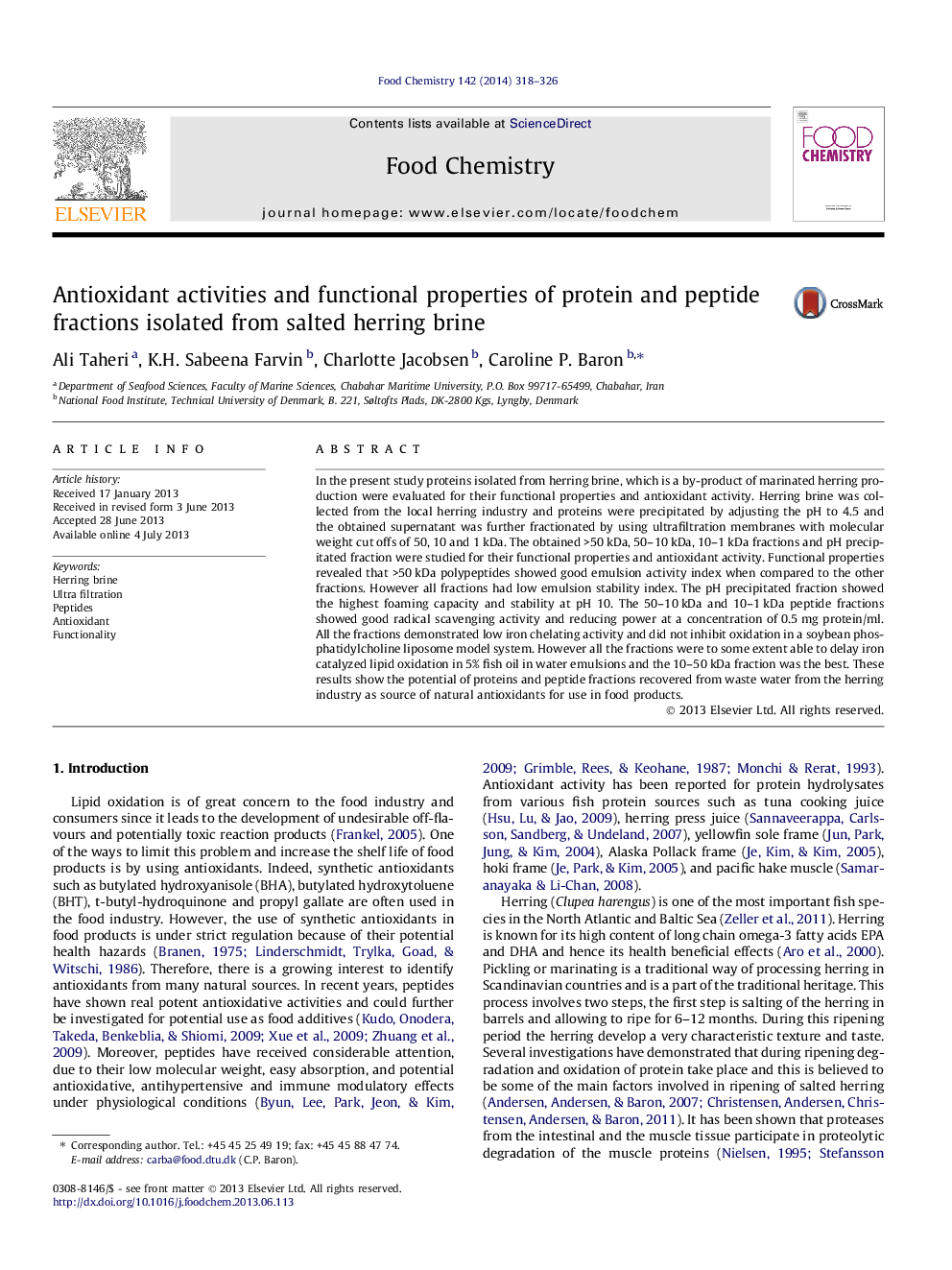| Article ID | Journal | Published Year | Pages | File Type |
|---|---|---|---|---|
| 7600918 | Food Chemistry | 2014 | 9 Pages |
Abstract
In the present study proteins isolated from herring brine, which is a by-product of marinated herring production were evaluated for their functional properties and antioxidant activity. Herring brine was collected from the local herring industry and proteins were precipitated by adjusting the pH to 4.5 and the obtained supernatant was further fractionated by using ultrafiltration membranes with molecular weight cut offs of 50, 10 and 1Â kDa. The obtained >50Â kDa, 50-10Â kDa, 10-1Â kDa fractions and pH precipitated fraction were studied for their functional properties and antioxidant activity. Functional properties revealed that >50Â kDa polypeptides showed good emulsion activity index when compared to the other fractions. However all fractions had low emulsion stability index. The pH precipitated fraction showed the highest foaming capacity and stability at pH 10. The 50-10Â kDa and 10-1Â kDa peptide fractions showed good radical scavenging activity and reducing power at a concentration of 0.5Â mg protein/ml. All the fractions demonstrated low iron chelating activity and did not inhibit oxidation in a soybean phosphatidylcholine liposome model system. However all the fractions were to some extent able to delay iron catalyzed lipid oxidation in 5% fish oil in water emulsions and the 10-50Â kDa fraction was the best. These results show the potential of proteins and peptide fractions recovered from waste water from the herring industry as source of natural antioxidants for use in food products.
Related Topics
Physical Sciences and Engineering
Chemistry
Analytical Chemistry
Authors
Ali Taheri, K.H. Sabeena Farvin, Charlotte Jacobsen, Caroline P. Baron,
